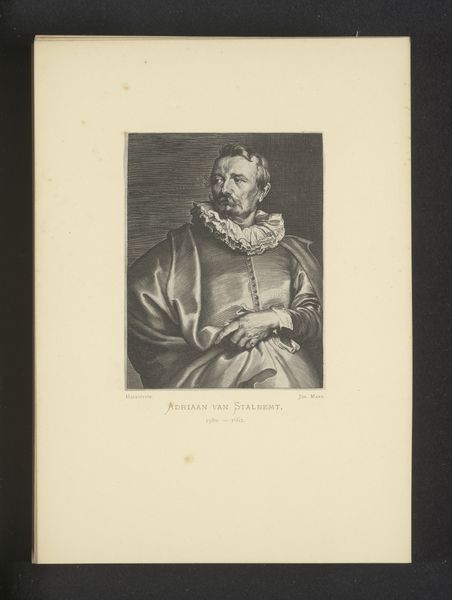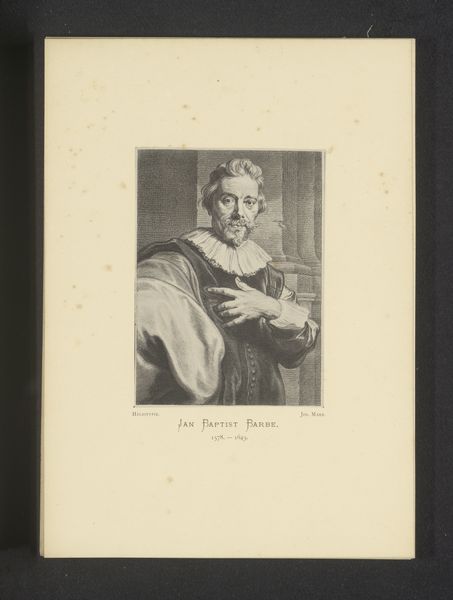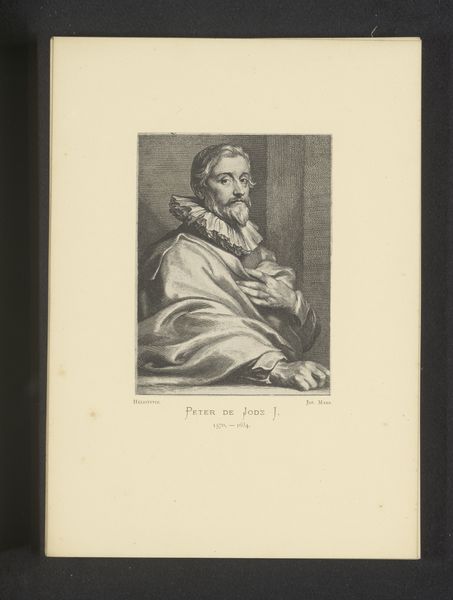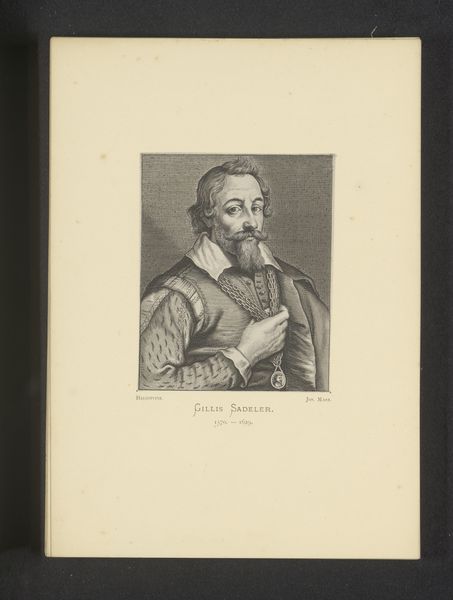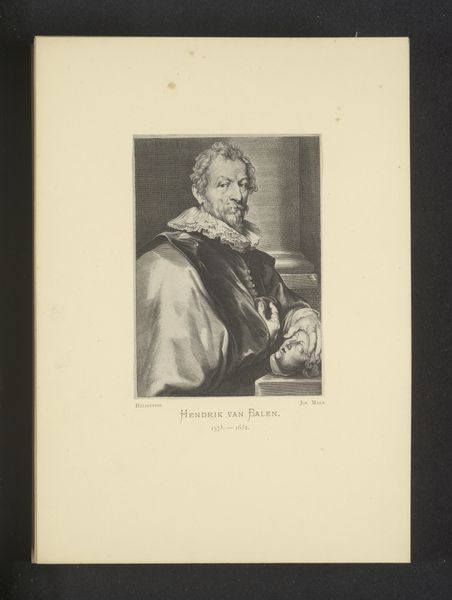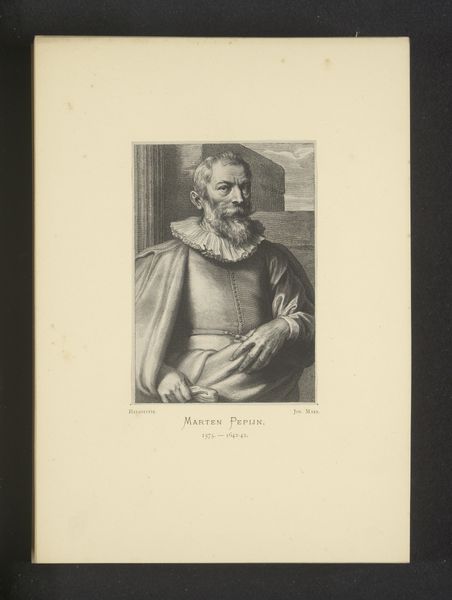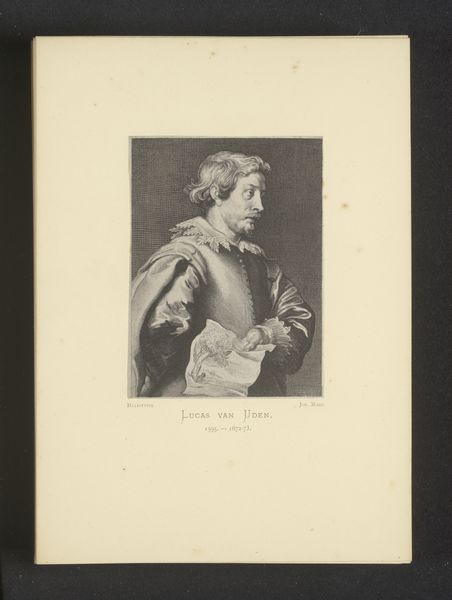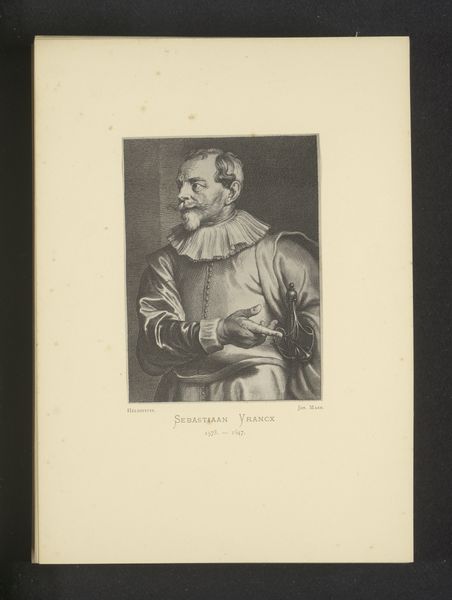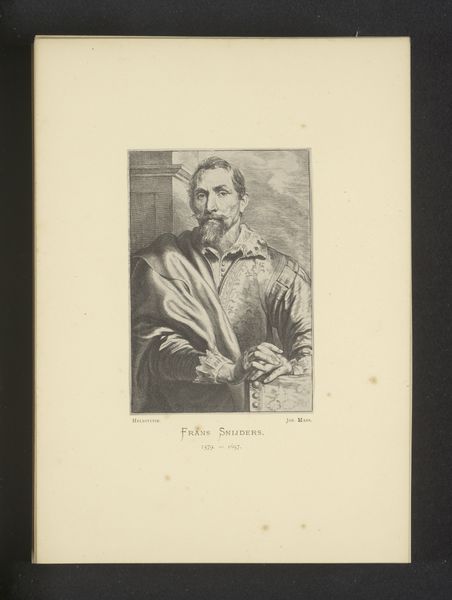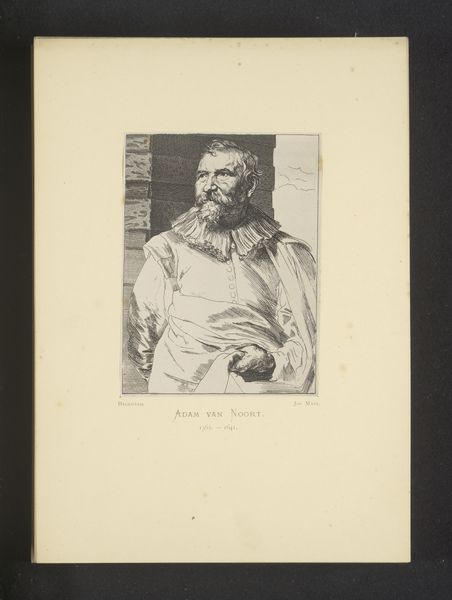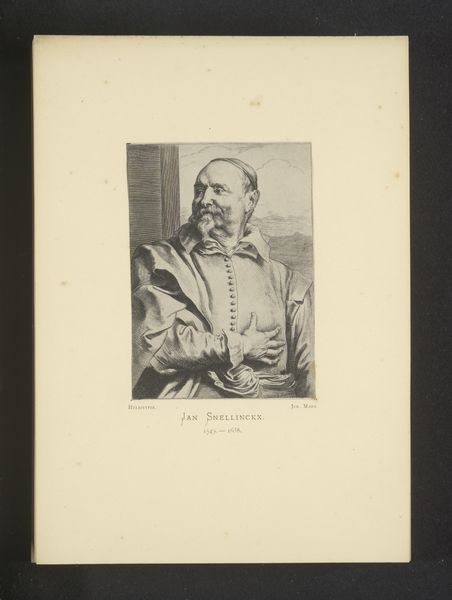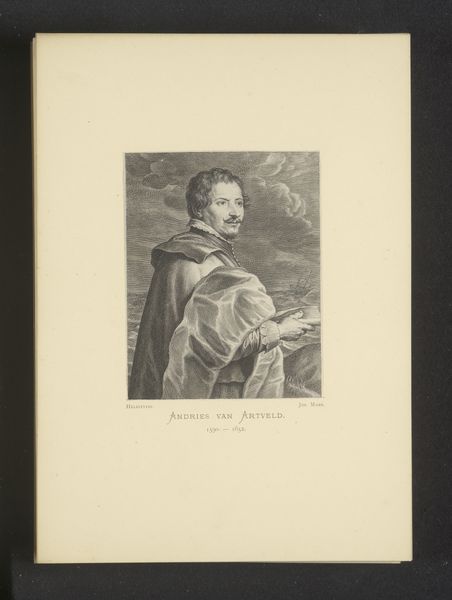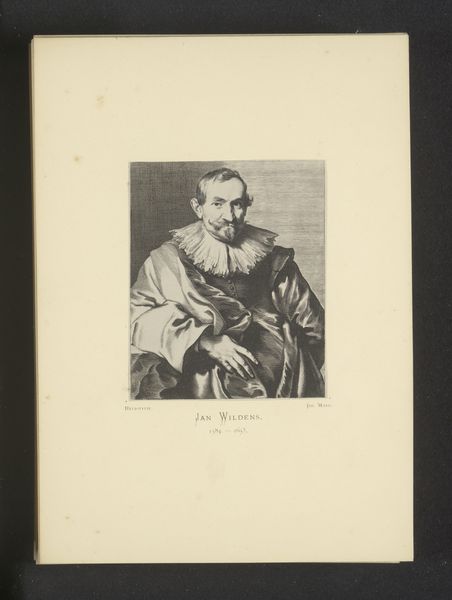
Reproductie van een gravure van een portret van Artus Wolfaerts door Cornelis Galle (I) before 1877
0:00
0:00
print, engraving
#
portrait
# print
#
history-painting
#
academic-art
#
engraving
#
realism
Dimensions: height 119 mm, width 88 mm
Copyright: Rijks Museum: Open Domain
Curator: This print, made before 1877, presents a portrait of Artus Wolfaerts after Cornelis Galle (I). It's an engraving. Editor: There’s an almost startling immediacy to it, even through the formality of the period. It makes me think of intellect and self-assuredness. It has very pronounced light-dark contrasts. Curator: Let’s talk about Galle's role in disseminating Wolfaert's image. Engravings like this allowed wider access to portraits that would have otherwise been confined to painted commissions. The print functioned as a way to popularize the artist's likeness. Editor: Yes, the symbolism here speaks volumes. His confident gaze and the opulent ruff emphasize his status, but I’m intrigued by the cloak; its folds suggest both authority and perhaps a desire for some distance. The artist is using the iconography of power, but subtly undercutting it, isn’t he? Curator: Precisely! And consider the labor involved. The printmaker’s skill in replicating tone and texture—the act of translation from painting to engraving demanded immense craft and technique, making multiple copies. We are really focusing on labor here! Editor: So interesting to note how these reproductions, however skillfully done, always reflect the aesthetic choices and available technologies. To reproduce also meant to interpret, re-frame a sitter’s significance in a new medium. Curator: Absolutely. Printmaking opens conversations about originality, labor and artistic intentions. The network for dissemination of Wolfaert’s image through prints changed how society accessed artistic personalities. Editor: This analysis underscores how carefully constructed the performance of identity was even then, something easily available because it's reproductible through printing methods. Curator: Looking at it this way adds a crucial layer to the piece’s historical context and enduring relevance. Editor: Indeed. It's wonderful to see how it acts as a document reflecting broader trends about visibility and the role of images at the time.
Comments
No comments
Be the first to comment and join the conversation on the ultimate creative platform.
